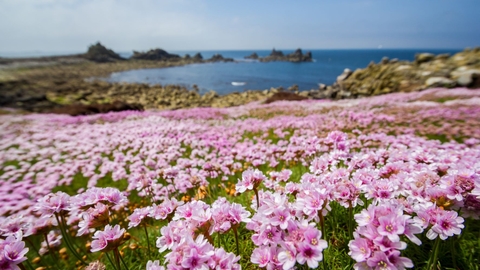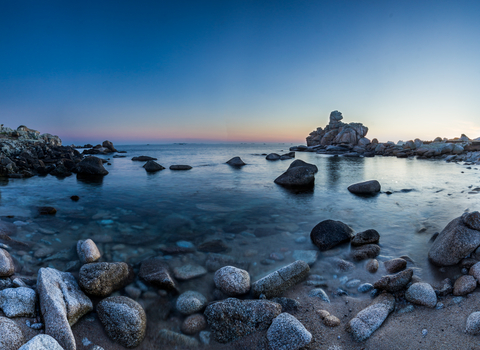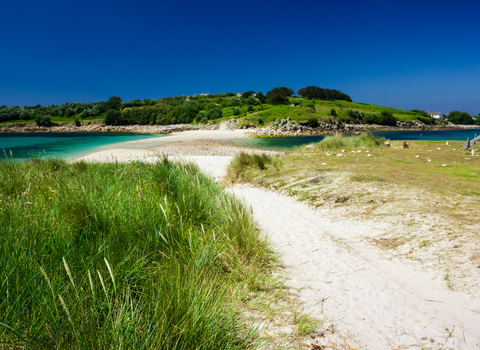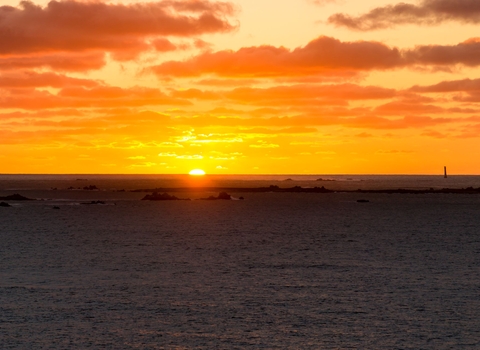
Thrift (c) Ed Marshall
Annet
Know before you go
Dogs
When to visit
Opening times
There is no access to AnnetBest time to visit
Admire the seabird colonies by boat between April and JulyAbout the reserve
Right out on the Wild Atlantic Edge about 1km west of the neighbouring islands of St Agnes and Gugh, Annet is shaped by the wind, sea and salt spray. Flat and undulating, it rises just 18m above sea level. The island boasts the largest and most diverse number of breeding seabirds throughout the archipelago, with around 6,000 pairs from ten species. The island is closed year-round to people to permit the nationally important number of seabirds to breed successfully.
The island is notified for several species including storm petrels, lesser black-backed and great black-backed gulls, puffins, razorbills, fulmars and the archipelagos largest colony of Manx shearwaters. In May, the northern edge of the island turns bright pink with a huge carpet of thrift. The island is also noted for the nationally rare shore dock, found in freshwater gullies on the shingle beaches and the lichen Rocella fuciformis found on the exposed granite carns. The island also supports a large colony of grey seals, which can be seen throughout the year and which pup between August and November. The island now boasts its second mammal, with recent records of lesser white-toothed (Scilly) shrew.
Long-term annual seabird monitoring takes place to record the numbers of breeding birds on the island. This helps provide data for seabird numbers nationally, along with productivity counts for some species of gull. We carry out this work over just two or three visits a year to keep disturbance to a minimum. We take the opportunities to remove any marine debris, particularly marine plastics, when there are no breeding birds and disturbance to seals is minimal.



